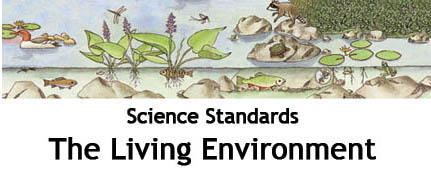

Students will understand and apply scientific concepts, principles, and theories pertaining to the physical setting and living environment and recognize the historical development of ideas in science.
Organisms inherit genetic information in a variety of ways that result in continuity of structure and function between parents and offspring.
“As students investigate the continuity of life, emphasis should be placed on how plants and animals reproduce their own kind. Teachers should lead students to make observations about how the offspring of familiar animals compare to one another and to their parents. Students know that animals reproduce their own kind—rabbits have rabbits (but you can usually tell one baby from another), cats have kittens that have different markings (but cats never have puppies), and so forth. This idea should be strengthened by a large number of examples, both plant and animal, upon which the students can draw. Students should move from describing individuals directly (e.g., she has blue eyes) to naming traits and classifying individuals with respect to those traits (e.g., eye color: blue). Students can be encouraged to keep lists of things that animals and plants get from their parents, things that they don’t get, and things that the students are not sure about either way.” From the Elementary Science Core Curriculum Guidelines
Recognize that traits of living things are both inherited and acquired or learned.
2.1b Some characteristics result from an individual’s interactions with the environment

